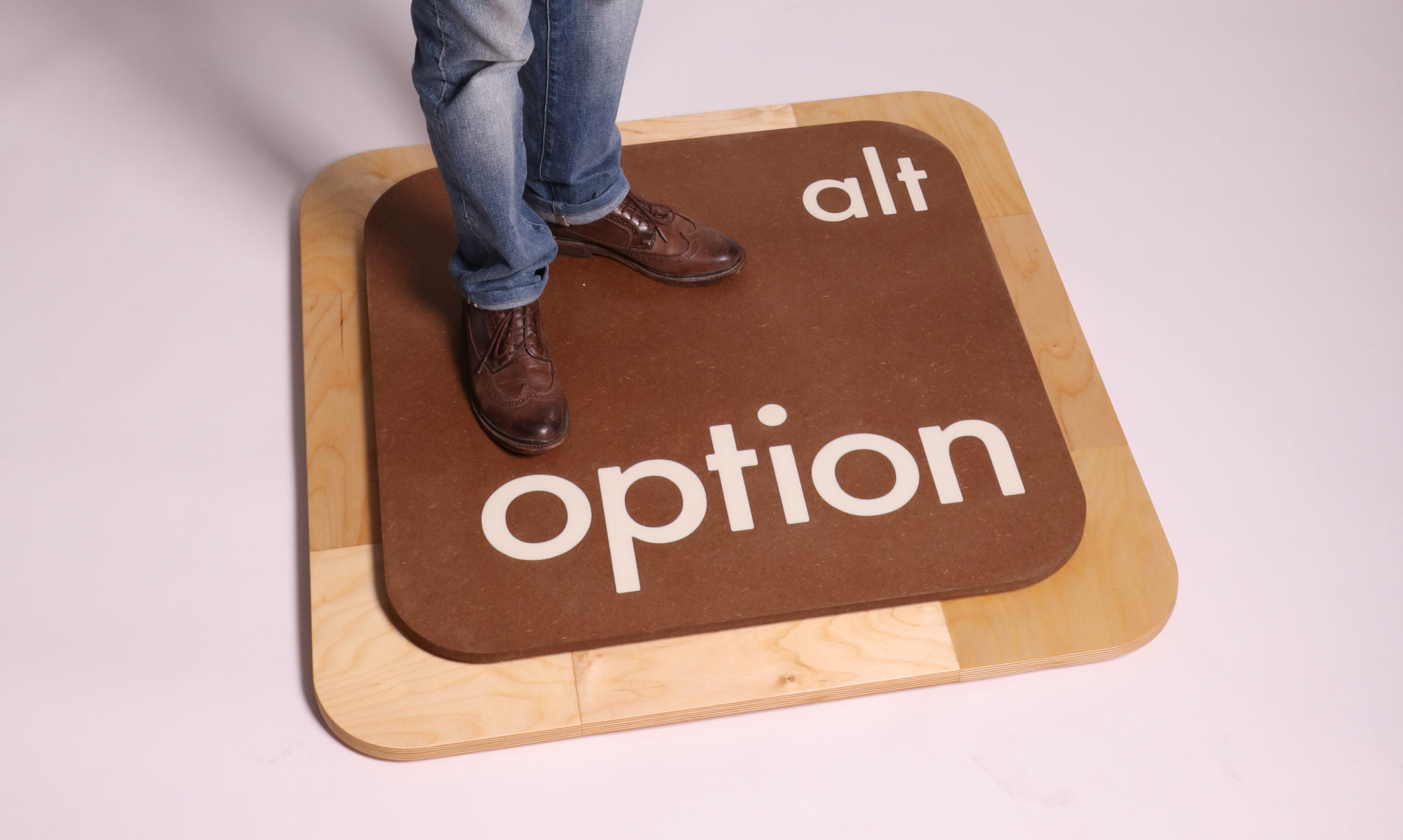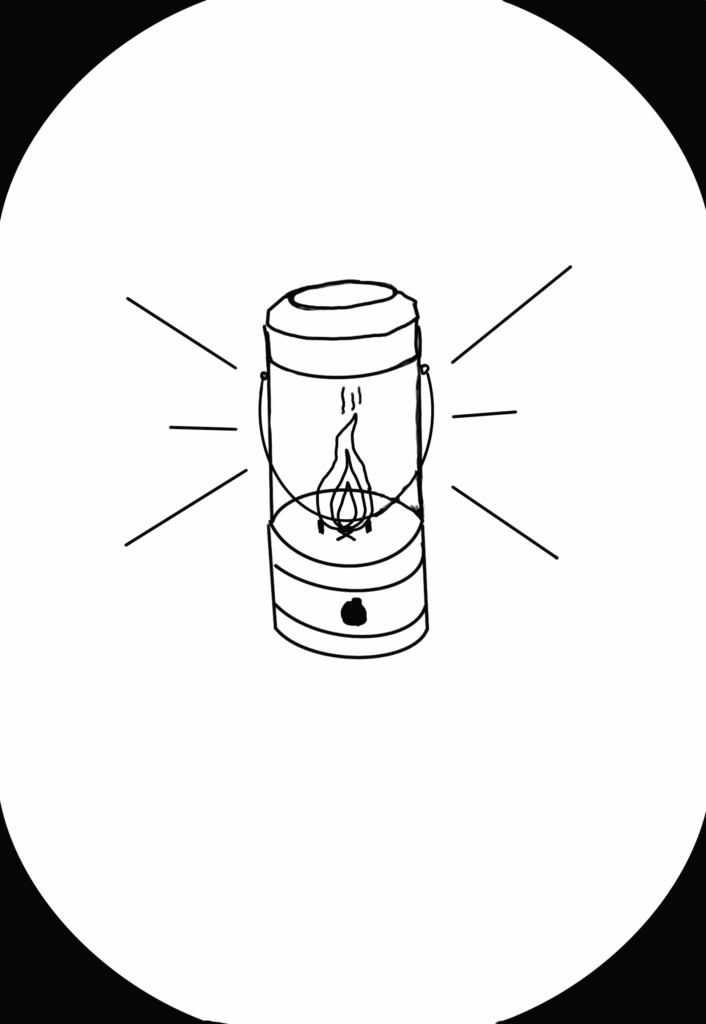- Was it fun?
- I would overall say the game was fairly fun; however, I don’t think it stood out as much as the other games we played in class.
- What were the player interactions?
- The game was similar to Pandemic in the way that the players interacted to try and beat the game before they all sank off the board.
- How long did it take to learn?
- Since this was the second game we played, it didn’t take us long to figure it out. Realizing that it was similar to the previous game we had participated in, I would say overall it took us no more than 10 minutes.
- What was the most frustrating moment or aspect of what you just played?
- Honestly, the most frustrating moment of the game was trying to get to the treasure spot while also praying that one of the flooded spots didn’t get taken.
- What was your favorite moment or aspect of what you just played?
- My favorite moment of the game was being able to trade with other players to get us closer to our goal of getting the treasure, and it sort of played out in the sense that we each were able to get a treasure piece.
- Was there anything you wanted to do that you couldn’t?
- One thing I wish I could do, which would have defeated the whole point of the game, was to be able to cross diagonally.
- If you had a magic wand to wave, and you could change, add, or remove anything from the experience, what would it be?
- If I had a magic wand to wave and could change anything from the experience, I would have liked to expand the game with a grander goal in mind; however, we did play on easy mode, so if the water levels were higher I think that might have changed my opinion on the game and it’s purpose and how much I found it entertaining.
- Is this a game you would play again? Yes _____ No ______ Why
- I would play this game again simply because I feel like I didn’t give it a fair enough turn, and we did not complete it till it’s full of potential however I would also like to add that this was the second game that we played in the last 45 minutes of class, and my brain was dead for most of the game after Pandemic.
- Analyze the game using the 3 act structure.
- Analyzing the game Forbidden Island in the three-act structure starts off with the First Act of setting up the game and getting to know each of the characters’ objectives and how that plays out throughout the narrative of the game, having the theme in mind as rescuing treasures, all the while trying not to let the entirety of the island flood. The second act or the struggle for victory, takes place deeper in the game where the Dynamics keep switching, and the goal is to not let the Island sink. Also, the game feels like it could take place in silence or in a very quiet room, which can easily make the players bored. The third Act, which is the push for victory, where each of the players must stand on Fool’s Landing, is a little bit more exciting than the rest of the game, but the more I think about it, I don’t know how compelling this game was. It ultimately avoided the “kingmaker effect” where a losing player can impact victory. However, I do think it is a nice touch because it requires players to work together to succeed or fail as a unit, which then pushes the idea of a shared outcome.
- What are the collaborative and or competitive aspects of the game?
- I don’t think this game was as competitive in the same way as Pandemic, which also ultimately avoided the idea of any frustration or big feelings with the players; however, yet again, it is collaborative, it is just not as compelling.
- What is the game’s metaphor and which of the game’s mechanics standout?
- The game’s metaphor is ultimately telling The Narrative of escaping an island with treasure before it sinks; this narrative continues throughout the entirety of the game. I would say the biggest part of the mechanics is the idea of the water level rising, as well as tiles completely being removed from the game, cutting down the size of the board the players have to work with.
Game Response Questions – Pandemic
- Was it fun?
- I thoroughly enjoyed the game pandemic, though it was a little Annoying to set up at first.
- What were the player interactions?
- Basically, all the players interacted by trying to beat the game before the game beat the players. More times than not, there are more ways to lose than there are to win, so it required a lot of teamwork. Communication was the biggest interaction between players as far as how we can all use the mechanics of the game to our benefit and sort of foreshadow and strategize each turn.
- How long did it take to learn?
- I would say it probably took us a good 20 minutes to learn just because there were so many mechanics to add on to the themes, like there was a hand limit of seven, also the idea of the flights and how cures work, and the infection rate increases while trying to get rid of outbreaks and epidemics.
- What was the most frustrating moment or aspect of what you just played?
- Honestly, the most frustrating moment of the game was probably when I had my little rage moment trying to collect enough cards to trade them in for cures but also part of me wanted to wipe out all the epidemics before finishing the game.
- What was your favorite moment or aspect of what you just played?
- My favorite moment of Pandemic was honestly strategizing with my other players on how we could trade and meet up with each other in the same city as well as how each of us could take on our own City so that we each had our own cures.
- Was there anything you wanted to do that you couldn’t?
- Honestly, the only thing I would add, which is outside of the game structure and games in general, was the ability to sort of go back or reverse a turn because there were a lot of times where we didn’t 100% think the outcome through when there was a better way of going about it.
- If you had a magic wand to wave, and you could change, add, or remove anything from the experience, what would it be?
- If I had a magic wand, I would try to find a way to remake the game, but from a Gateway game perspective, using Luck instead of strategy, I think it would be interesting to see how the mechanics, meaning, and theme shifted, and honestly, a different theme in general would be interesting to see how it went into play.
- Is this a game you would play again? Yes _____ No ______ Why
- I would definitely play this game again and have already considered asking my friends to come to the library to play it with me. I think what makes this game so addictive is that competitiveness; however, it is not everybody for themselves, it is everyone else against the game and I think that brings an added power of teamwork.
- Analyze the game using the 3 act structure.
- As far as the beginning structure or act one of the game, it all starts with the setup, as far as where infection starts on the board and who each player will take part in, and all of the added rules to send players’ characters, as well as divvying up all of the epidemic cards. The second act, which is the idea of the struggle and push for victory, comes into play when players use strategic moves and trade to their fullest advantage, ultimately coming up with more cures. The third act, or the push for victory, comes into play when all of the infections on the board have depleted. You’re down to your final set of cards, looking to get the last of the cures, when the whole gameplay intensifies, which can also come across as a euphoric phase for the players. This is where all players’ emotions are heightened.
- What are the collaborative and or competitive aspects of the game?
- I would honestly say the collaborative aspect of the game is very prevalent in trying to beat the game, especially when reaching the third Act. As far as the competitive aspect between players, I don’t really think that is prevalent in the game.
- What is the game’s metaphor and which of the game’s mechanics standout?
- Overall, the game’s metaphor is the idea of an expanding pandemic, which is the realm the players live in for the entirety of the game. Of the couple of game mechanics I mentioned earlier, I would honestly say the one that stood out the most was the cures because that was the biggest way for the players to beat the game.
Andrew H Pandemic/Forbidden island Questions
Argument Game Analysis
Game Response Questions – Hanabi
Was it fun? Yes
What were the player interactions? We couldn’t see our cards but had to tell the other players what was in their hands
How long did it take to learn? A little while but not too long
What was the most frustrating moment or aspect of what you just played? Trying to figure out how to tell the other players what they have without giving too much away or not being able to remind the other players what was already told to them
What was your favorite moment or aspect of what you just played? It was like a card game but with fun graphics so I enjoyed it (and I like cards so that was good)
Was there anything you wanted to do that you couldn’t? be able to use the wild cards as just wilds when we played the second round
If you had a magic wand to wave, and you could change, add, or remove anything from the experience, what would it be? Being able to use the wilds differently
Is this a game you would play again? Yes I would, Why, because it was fun and engaging
Analyze the game using the 3 act structure: Honestly it was less of a 3 act game in my opinion, it felt like one continuous action for some reason
What are the collaborative and or competitive aspects of the game? Collaborative was the entire game really, we couldn’t win on our own and only won as a team and how well we all performed and got scored on that.
What is the game’s metaphor and which of the game’s mechanics standout? You are firework pyrotechnicians trying to save a firework show; I really like not being able to see your own hand, made it infinitely more interesting
Forbidden Island Analysis
Game Response Week Three
ALEAH DUDEK
Argument :
Was it fun? It was fun I think it would be more fun playing competitively.
What were the player interactions? Yes almost every turn.
How long did it take to learn? Only a few minutes I liked how easy it was to understand.
What was the most frustrating moment or aspect of what you just played? I didn’t find the game frustrating at all , but I can see how it would be if it was the competitive version.
What was your favorite moment or aspect of what you just played? I liked the different match making and the different ways you have to move the pieces.
Was there anything you wanted to do that you couldn’t? No
If you had a magic wand to wave, and you could change, add, or remove anything
from the experience, what would it be? I wouldn’t change anything I think it’s a nice simple game that could be played over and over again.
Is this a game you would play again? Yes _____ No ______ Why I think it was fun, can be relaxing , but also competitive.
Analyze the game using the 3 act structure.
Act 1 : The set up was to set up your pieces either in order or random and move them accordingly to how the certain symbols moves along the board and try to get the 3 stacks in order to collect points.
Act 2: The rising action could be to make the matches and collect more and more in order to win or screw people over potentially.
Act 3 : If you wipe all the pieces off the board or have the most stacks you win the game or everyone wins the game if playing the collaborative version.
What are the collaborative and or competitive aspects of the game? The collaborative aspects is helping each other out moving pieces to one another to get stacks and wipe more pieces iff the board. The competitive aspect is making your way over to other peoples pieces to steal their pieces in order to give yourself more stacks.
What is the game’s metaphor and which of the game’s mechanics standout?
I would think the games metaphor is rock paper scissors because some pieces over power other pieces to make stacks and collect stacks for yourself or one another. The mechanics I would say is also Rock paper scissor because we used that to determine who went first. Also the way the pieces moved in order to get around the board and the colors of the pieces.
Game Response Questions Week 3
ALEAH DUDEK
Forbidden Island:
Was it fun? It was alright the mechanics were kind of boring , but the theming was pretty.
What were the player interactions? Yes we had to collaborate the entire game almost, but we could make personal decisions.
How long did it take to learn? Not long like 20 minutes.
What was the most frustrating moment or aspect of what you just played? I wasn’t really frustrated, I guess the only thing is is that it was a little too easy to beat.
What was your favorite moment or aspect of what you just played? I liked the theming and the suspense of it.
Was there anything you wanted to do that you couldn’t? Not really, but I wish it was trickier.
If you had a magic wand to wave, and you could change, add, or remove anything
from the experience, what would it be? I would add more cards such as to deflood or more actions to move.
Is this a game you would play again? Yes _____ No ______ Why No it was kind of boring it is definitely a one and down game.
Analyze the game using the 3 act structure.
Act 1 : The board is laid out in different locations making it more adventurous, the tiles representing different parts of the island. The characters choose their abilities and their “powers” throughout the game. The objective is to save the island from sinking while collecting treasures. You are in danger of pulling sinking cards destroying the island while trying to save it.
Act 2: More tiles flood and disappear, making the map shrink. The water level meter may rise from bad flood card draws. Key tiles needed for treasures may flood, threatening to end the game early. Players have to sacrifice actions and resources to keep them intact. Players must coordinate their moves carefully.
Act 3: The last treasures are collected, the water level is dangerously high, and players make their desperate dash to the helicopter pad. The story will end in a win or defeat.
What are the collaborative and or competitive aspects of the game? We had to collaborate to collect the treasures and the competitiveness was pulling the sinking cards.
What is the game’s metaphor and which of the game’s mechanics standout? The games metaphor is risk and reward I feel because the team has to collaborate in order to save the island, but as you pull cards it can get really risky to the race to save the island from flooding. The mechanics are the flooding and sinking tiles limiting where players can go. The water level meter can dictate how in danger you are in. The treasure cards can help lead you to victory. Role powers can help collaboration or avoid the sinking tiles.
Week 2 Playtest Questions
Munchkin Gloom
- Was it fun?
Overall, Munchkin Gloom was a fun game to play.
- What were the player interactions?
The player interactions included applying positive self-worth to other players’ cards, getting positive self-worth from other players, and interacting with event cards.
- How long did it take to learn?
Munchkin Gloom took about half an hour to learn. The game was really confusing at first.
- What was the most frustrating moment or aspect of what you just played?
The most frustrating moment of the game was when my characters would get killed with a self-worth score of zero.
- What was your favorite moment or aspect of what you just played?
I really enjoyed the event card where I could take one card off of one character that belonged to each player.
- Was there anything you wanted to do that you couldn’t?
I wanted to revive my dead characters.
- If you had a magic wand to wave, and you could change, add, or remove anything from the experience, what would it be?
I would add a rare card that allows players to revive dead characters to try and get a lower self-worth score on them.
- Is this a game you would play again?
Knowing what I know now, I would play the game again. My greater knowledge will make the game more fun and interesting since I know how the self-worth system works.
Sushi Go!
- Was it fun?
Overall, I had a lot of fun playing Sushi Go!
- What were the player interactions?
The player interactions included passing the cards around until nobody had any cards left.
- How long did it take to learn?
The game took about 5-10 minutes to learn. However, the chopsticks card was confusing to me and didn’t make sense for a good bit.
- What was the most frustrating moment or aspect of what you just played?
The most frustrating moments were when I didn’t get a card that complemented another.
- What was your favorite moment or aspect of what you just played?
My favorite moments were when I was able to stack as many cards as possible to earn the most points.
- Was there anything you wanted to do that you couldn’t?
There was nothing I wanted to do that I couldn’t.
- If you had a magic wand to wave, and you could change, add, or remove anything from the experience, what would it be?
I wish there were some sort of trading system in the game.
- Is this a game you would play again?
I would play Sushi Go! again. I have a much better understanding of the flow and how certain cards work. I think it would be even more fun than the first time playing.
Question Set – Week 2
Play Tests – Week 2
Week 2 Reading Questions
Madison Hurst
- Question Set 1
- What Mechanics would you like to use for a game with a theme that revolves around being the size of a nanometer? – I think it would be interesting to make the players feel tiny, and very aware of the sizing throughout the duration of the game. I think it would be cool to make the players complete different tasks, and “going against” different scales.
- Who are you making games for? – This game could be played by 9-15 year olds. I think with this theme it could be used as a fun game to play in science class or just in general.
- Who will be your play testers outside of class? – My play testers could be my roommates or since my mom teaches 6th grade science she could let them play the game since they are within the age range.
- Question Set 2
- Can you think of a game you were able to play without referring to the rules? – I am able to play UNO or BS without needing to refer back to the rules.
- How do you define what a game is? – I would define a game as immersive environment that encapsulates the player and keeps them interested in the game. A good game is when it is so fascinating that the player will not break focus from it. Furthermore, a game typically has a specific set of rules that users have to follow as they attempt to win in the end.
- What features can make your games more intuitive? – Some features that can make my game more intuitive is having a consistent rules, color scheme, and readable cards/boards.
- Question Set 3
- What was your gateway game? What do you play to introduce others to gaming? – My gateway game was either UNO or SushiGo! I love both of these games and they are still a staple game my family and I play. I would play UNO if I had to introduce other people to gaming because it is an extremely quick game to pick up, and will keep the player interested.
- What features do gateway games share?- Some features that gateway games share is simple rules, engaging, able to understand or see who won easier, and approachable.
- What are the 10 beautiful mechanics and what should you aim for with your own? – Kingmaker’s Noblesse Oblige, BattleTech’s Heat, Set’s Set-making, Magic Card Tapping, Battle Cattle Cow tipping rule, xXxenophile’s Popping, Bohnanaza’s, Mississippi Queen Paddlewheels, Times Up Communication breakdown, Dominions constant shuffling. These games are important because they are all considered to be extremely engaging and successful. By going off of how they were created and how they were designed is the baseline when making your own. These games give you reference points of what games have good mechanics.
- How does luck and strategy factor in to game play? – Luck and strategy play a big factor into game play because it can be out of your control. When playing, you are not in control of the cards you get or the action that another player does. Strategy is important because this is the part where you are in control of. This is when you are making plans and actions that is aiming to set yourself up to win. Moreover, I believe that skills is a factor as well. It is the knowledge that you had prior to the game, and are able to utilize throughout. Skills enable you to potentially make the right decision at the right time.
5 Game Ideas Using Cards
- Bullsuit- Like the card game Bullshit, this variation would focus on suits rather than ranks. Instead of going in numerical order, players would take turns claiming to play a certain number of hearts, diamonds, spades, or clubs. Since it’s harder to track suits than numbers, this version adds an extra layer of difficulty and bluffing.
- Match Four- In this game, each player is dealt four cards, and the remaining cards form a draw pile with the top card flipped face-up to start a discard pile. Players take turns drawing one card from either the draw pile or the discard pile and then discarding one card face-up. The goal is to collect four cards of the same rank(numbers/face cards), and the first player to achieve this immediately wins the round. If the draw pile runs out, the discard pile is shuffled to create a new draw pile so play can continue. For longer play, players can keep score by awarding points to round winners, and the first to reach a set number of points wins the game.
- Chips– This card game is played with a standard deck and a set of chips, with one player acting as the dealer while the rest take turns guessing the value of the top card. On each turn, a player makes a first guess at the card’s value; if correct, the dealer must place that card’s value in chips into the player’s pile. If the guess is wrong, the dealer announces whether the actual card is higher or lower, and the player makes a second guess. If the second guess is correct, the dealer takes that card’s value in chips from the player, but if it is still wrong, the player instead pays chips equal to the difference between their guess and the actual card’s value. Each revealed card is placed face up so players can track what has already been played, and if the dealer avoids losing chips for three consecutive turns, the role of dealer passes to the next player. The game continues until the deck is exhausted or the players run out of chips.
- Power– This card game is built around bluffing and power plays using money. Each player starts with two cards that represent different real-life positions, such as a Politician, Banker, Lawyer, CEO, or Journalist. These cards determine which roles the player can claim to be. On their turn, a player can use the action of the role they claim, whether they actually have that card or not. For example, the Banker might collect extra money, the Lawyer might block someone from taking money, the CEO could demand money from another player, and the Politician might remove another player’s influence. Since players can lie about their roles, others may call them out, and if the bluff is exposed, the liar loses a card, but if the challenge fails, the accuser loses a card instead. Players spend money to “overthrow” opponents, aiming to knock them out of the game by removing their positions. The last player with a surviving role wins.
- Grocery Run!- Similar to the game Sushi Go! Grocery run would have the same actions of starting with a certain amount of cards, picking one and laying it down, then passing the hand to the next player until the hands are gone. This continues until all cards have been played, simulating a fast-paced “shopping trip.” Unlike Sushi Go!, where the goal is to score the most points, the objective in Grocery Run! is to build the cheapest grocery cart. Each card represents different grocery items with varying costs, and players aim to minimize their total spending while still managing their cart wisely. Special coupon cards add an extra layer of strategy, allowing players to reduce the cost of certain items or cancel out expensive ones. At the end of the round, players tally up the value of their carts, and the lowest total wins.




